
South Australian Medical Heritage Society Inc
Website for the Virtual Museum
Home
Coming meetings
Past meetings
About the Society
Main Galleries
Medicine
Surgery
Anaesthesia
X-rays
Hospitals,other organisations
Individuals of note
Small Galleries
Ethnic medicine
- Aboriginal
- Chinese
- Mediterran
Alfred Dudley Byrne
Eminent gynaecologist, soldier and sportsmanAcknowledgments: We are grateful to his son, Peter Byrne AM, RFD, ED, FRACS, FRCSE, who kindly donated some of his instruments to the Society, and provided the relevant information.
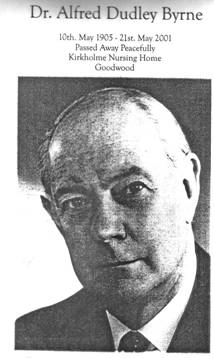
Dudley Byrne was born at Coobowie on Yorke Peninsula on 10 May 1905. His education was at Adelaide High School . He graduated MB BS at the early age of 22 from the University of Adelaide. During his university years he played competitive tennis and A grade Lacrosse. He served in the 10th Battalion (Army Reserve) and later as RMO 3rd Light Horse Regiment.After graduation he was an intern at the RAH and then RMO at the ACH, QVMH, and Parkside Mental Hospital . Between 1932 and 1935 he was the first Medical Superintendent at the Northfield Infectious Diseases Hospital .
He was an outstanding horseman, member of the Adelaide Hunt Club, Master of the Adelaide Riding Club and won many trophies.
In 1940 as a Major, AAMC, he raised 2/8 Fd Amb, AIF, 9th Division. He also formed a unit pipe band and trained its members as stretcher bearers.
In 1941, as OC B Coy 2/8 Fd Amb, his group was the first medical sub unit that travelled furthermost West along the North African Coast. He was an excellent military leader, avoiding the Afrika Korps ambush near Derna. During the siege of Tobruk he used discarded Italian communications equipment and ships ventilators to improve patient conditions.
He returned to Australia in mid 1942 and was promoted Lt.Col// CO 2/7 Fd Amb AIF training the unit to a very high level in the NT and Qld. Until December 1944 when a recurrent ankle injury terminated his front line military service.
After the war, he specialised in Obstetrics and Gynaecology. He topped the MRCOG exams in 1950. In 1954 he became one of the first three Senior Honorary Obstetricians at TQEH and in 1959 was appointed Senior Honorary Gynaecologist at the RAH . He was chairman of the SA state committee and member of the Australian Regional Council RCOG before the formation of the RANZCOG.
The era of major gynaecological surgery was paramount and he became an expert in the J.V. Meigs’ modification of Wertheim’s hysterectomy. He enjoyed teaching medical students and nurses using his own hand drawn diagrams. He was very supportive of Colombo Plan students and interstate residents. Colin Suchting, retired gynaecologist has fond memories of his support.
The following photographs show some of the instruments used by Dr. Byrne in his practice
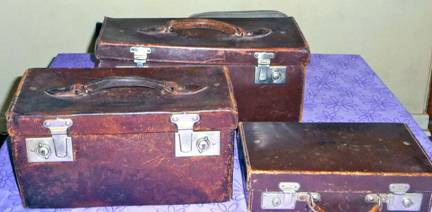

 Some of the straight and curved needles used by Dr. Byrne
Some of the straight and curved needles used by Dr. Byrne
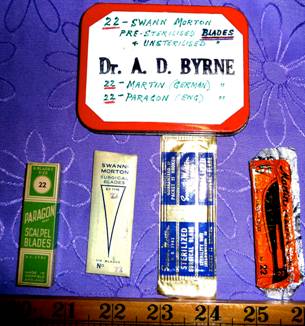
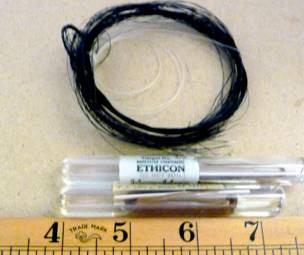
A small sample of sutures used by Dr. Byrne. In the foreground are plain and chromic cat-gut manufactured by ‘Ethicon’.
The coiled sutures are horsehair, silk and linen.
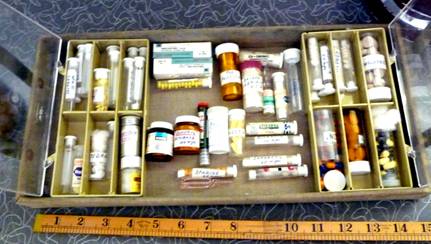
In the period after the war surgeons and medical practitioners often had first contact with their patients and carried first aid drugs with them. The above photographs show a tray from Dr. Byrne’s case (above) and a close-up (below).
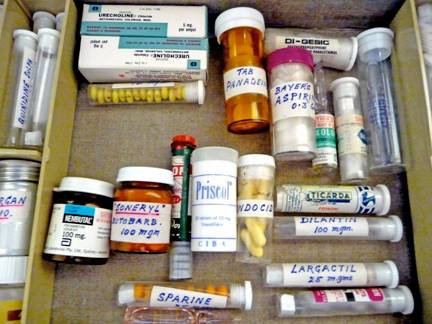
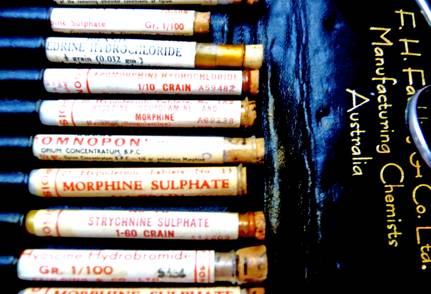
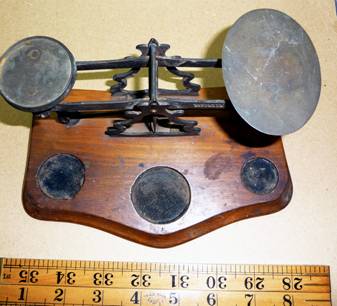 A set of Dr. Byrne’s scales used for dispensing
A set of Dr. Byrne’s scales used for dispensing
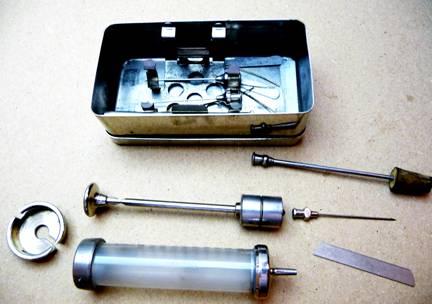 Syringes and needles were not disposable, They were carried in a stainless steel box filled with alcohol. Note the narrow “Record” nozzle of the syringe. The small saw at bottom left was used to open a vial containing the drug. .
Syringes and needles were not disposable, They were carried in a stainless steel box filled with alcohol. Note the narrow “Record” nozzle of the syringe. The small saw at bottom left was used to open a vial containing the drug. .
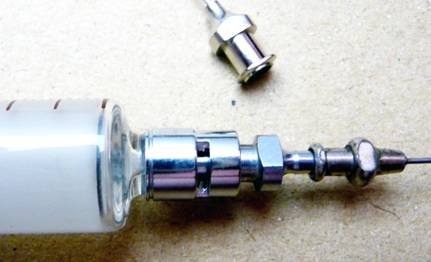
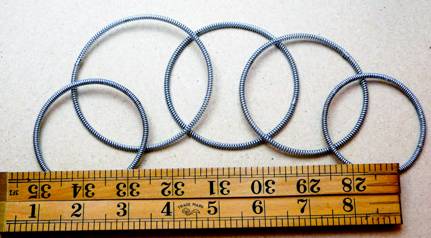
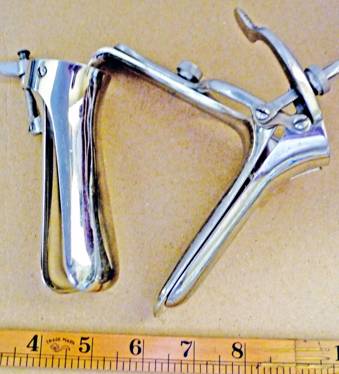
A set of vaginal specula also known as “duckbill” specula
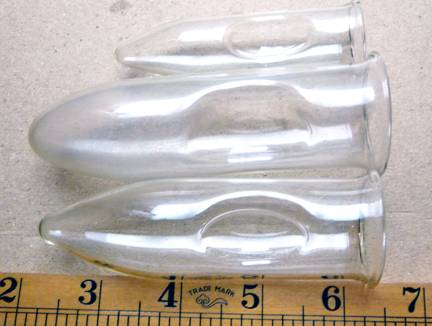
Vaginal dilators of various sizes (with inches scale)
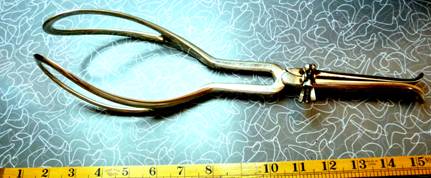
Obstetric delivery forceps
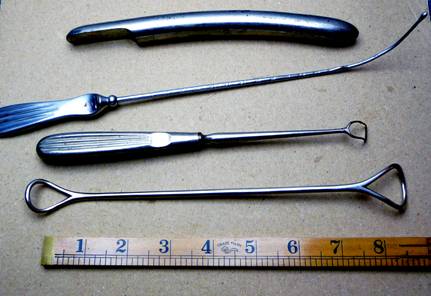
In a case of incomplete miscarriage some placental debris may be left behind and a dilatation and curettage is needed. A Hagar dilator is used to dilate the cervix. a graduated sound is used to measure the size of the uterus. Sharp and blunt curettes are used to remove the contents.
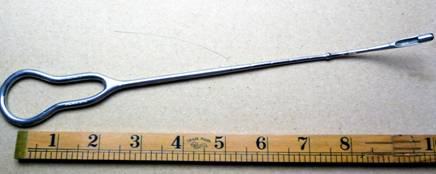
A uterine or cervical biopsy instrument.
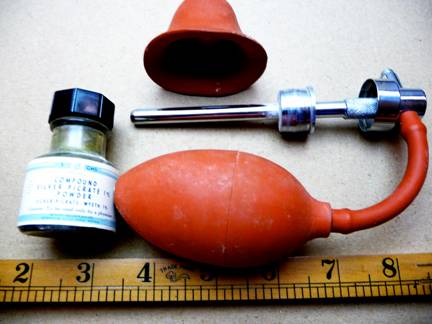
In the past a silver picrate powder was used to treat some forms of vaginitis. An insufflator and Dr, Byrne’s instructions are shown below.
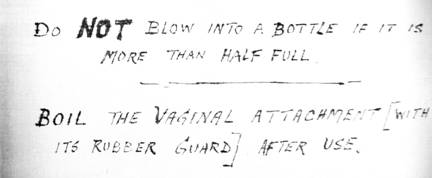
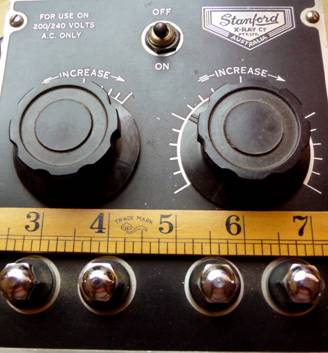
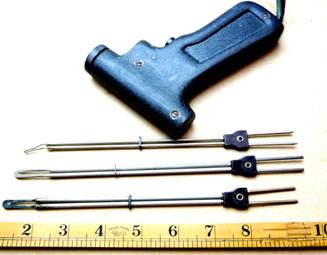
During the second half of the last century Acupuncture was becoming recognised as a putative form of treatment in Australia . Surgeons and physicians visited China and brought back the apparatus and needles.
It is quite likely that Dr. Byrne acquired such a kit during his visit to try to treat dysmenorrhoea, menopausal symptoms and similar conditions. The kit was among his instruments but was hardly used.
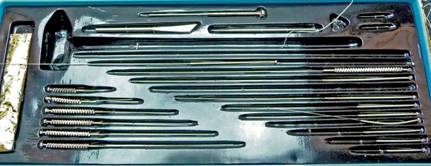
Dr. Byrne’s acupuncture kit
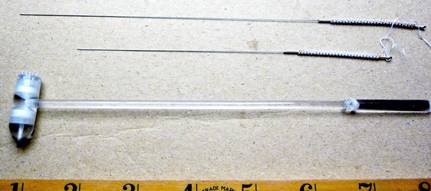
Two rather long needles and an electrical stimulator
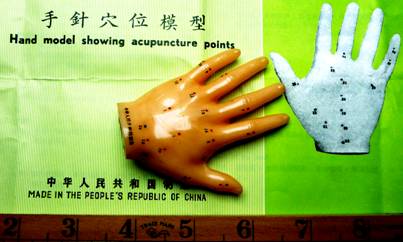
Chinese hand model from Dr. Byrne's kit, showing acupuncture points. Some are relevant to gynaecology. Please note 2 points on the dorsal side of the thumb
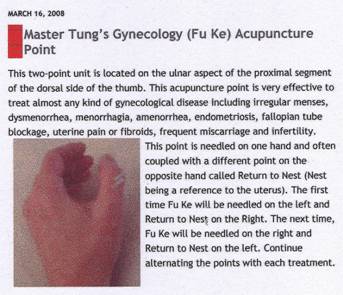
Recent article found on “Google” relating to acupuncture in gynaecology

-o0o-